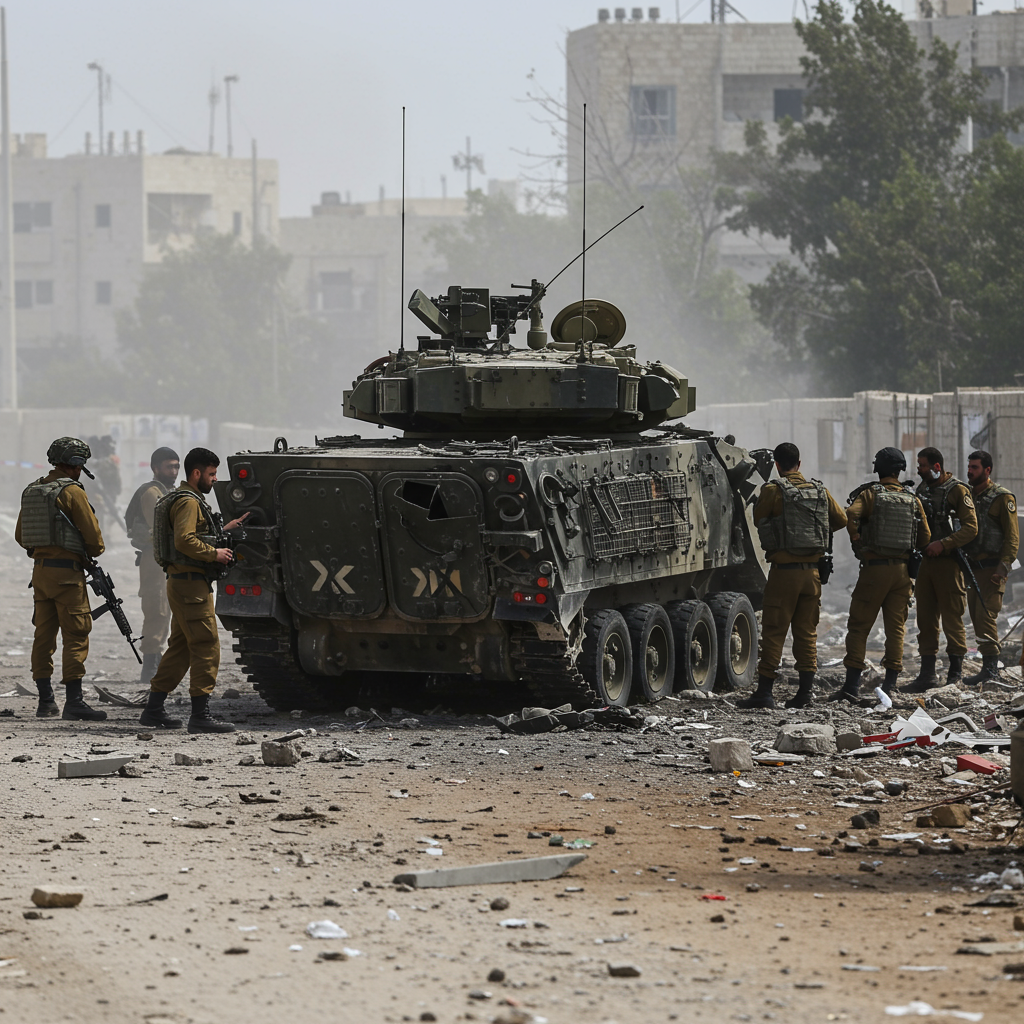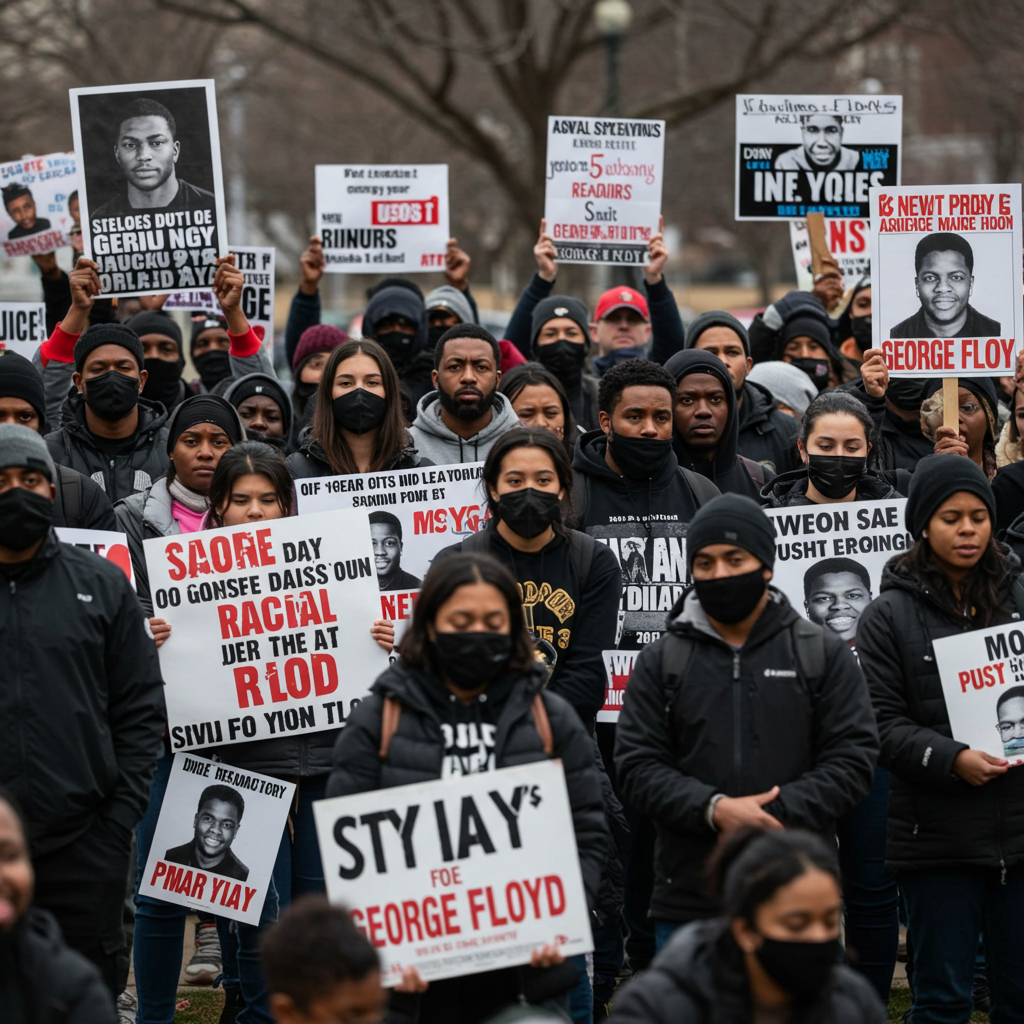Gaza Conflict Escalates: Deadly Attack on Israeli Troops
In a significant escalation of the ongoing conflict, seven Israeli soldiers were killed in the southern Gaza Strip on Tuesday, June 25, 2025, when an explosive device was attached to and detonated on their armored vehicle. The Israeli military confirmed the deaths, marking one of the deadliest days for the Israel Defense Forces (IDF) in Gaza in recent months.
The attack took place in Khan Younis, a city in southern Gaza where Israeli forces have conducted extensive operations throughout the war. According to IDF Chief Spokesman Brig. Gen. Effie Defrin, rescue attempts to save the soldiers were unsuccessful. Sources identify the vehicle as a “Puma” armored personnel carrier belonging to the IDF’s 188th Brigade and state that a Palestinian attacker attached an improvised explosive device (IED) to it.
This incident drew immediate national attention back to the grinding conflict with the Hamas militant group, coming shortly after a period dominated by tensions and a fragile ceasefire between Israel and Iran.
Separately, another Israeli soldier was reported seriously wounded in Khan Younis by weapons fire. While the military provided no further details, Hamas’s military wing, the Al-Qassam Brigades, claimed responsibility for an ambush in the area, stating they targeted Israeli soldiers sheltering in a residential building with missiles and machine-gun fire. It remains unclear if the military’s reported injury occurred in the same incident claimed by Hamas.
Broader Conflict Context and Heavy Casualties
The recent deaths add to the significant toll on the Israeli military since the war began following Hamas’s attack on Israel on October 7, 2023. Over 860 Israeli soldiers have been killed in total, with more than 400 deaths occurring during fighting inside Gaza.
The war was triggered by the initial Hamas assault, which killed some 1,200 people, primarily civilians, and resulted in 251 people being taken hostage. Around 50 hostages are believed to remain in captivity, with at least 20 thought to be alive. Repeated U.S.-led efforts to broker a ceasefire in Gaza have consistently stalled.
Meanwhile, Palestinian casualties in Gaza continue to mount dramatically. Health officials in the enclave reported that Israeli attacks resulted in 79 deaths over the past day alone, bringing the total number of Palestinians killed in the conflict to over 56,000, according to some reports, while other reports from Gaza health authorities place the number higher, exceeding 65,000. These figures, reported by Gaza health authorities, do not distinguish between combatants and civilians, but they assert that more than half of those killed have been women and children. Thousands have reportedly been killed since Israel resumed fighting on March 18.
Israel maintains that its operations target only militants and attributes the high number of civilian deaths to Hamas operating within densely populated civilian areas. The Israeli military claims to have killed over 20,000 Hamas militants, though it has provided no public evidence to support this figure, and Hamas has not commented on its casualty numbers. The reported Palestinian death toll represents the highest in any previous Israeli-Palestinian conflict.
Among the recent Palestinian deaths were 33 people who reportedly died while attempting to access urgently needed humanitarian aid. Palestinian witnesses and health officials allege that Israeli forces have repeatedly opened fire on crowds seeking food in recent weeks, resulting in hundreds of fatalities. The Israeli military, however, states it has fired warning shots at individuals approaching their forces in a manner deemed suspicious.
Spiraling Humanitarian Crisis and Aid Challenges
Gaza faces a severe and escalating humanitarian crisis, with Israel’s blockade and military campaign pushing the population to the brink of famine. While Israel is now allowing a limited amount of goods into the territory, aid groups maintain that the volume is insufficient to meet the desperate needs.
Hope arrived for some residents on Wednesday as aid trucks, including some carrying flour, reached Gaza City for the first time since March. Aid deliveries have been plagued by issues ranging from looting to difficulties coordinating with the Israeli military, and accessing aid collection points, particularly those run by organizations like the U.S.-backed Gaza Humanitarian Foundation, has proven chaotic and sometimes fatal due to stampedes and gunfire. Residents expressed hope that regular aid convoys would provide safer, more equitable distribution, replacing dangerous methods of accessing food.
Palestinian Frustration and Regional Tensions
Many Palestinians in Gaza have voiced frustration over the war’s prolonged duration, which is nearing two years, especially when contrasted with the recent conflict between Israel and Iran, which concluded with a fragile ceasefire in less than two weeks. Displaced residents describe ongoing suffering, destruction, and loss, questioning why the conflict in the enclave continues unabated after such extensive devastation.
Beyond Gaza, violence continues to flare in other areas. In East Jerusalem, a 66-year-old Palestinian woman was shot and killed during an Israeli raid on Wednesday in the Shuafat refugee camp. Her husband and a local Palestinian official stated she was standing on the roof of her home when Israeli forces stormed the camp and shot her, denying she posed any threat. Israeli police reported investigating the incident, stating a woman with “serious penetrating injuries” arrived at a checkpoint and died, adding that forces had fired at alleged “rioters” throwing objects during the operation. East Jerusalem, captured by Israel in the 1967 Mideast war, is claimed by both Israelis as part of their capital and by Palestinians as the capital of a future state, a status not internationally recognized.
Amidst the ongoing conflict, U.S. President Donald Trump, speaking at the NATO summit, expressed optimism about achieving “very good news” regarding ceasefire talks in Gaza, suggesting that U.S. intervention during the recent Israel-Iran tensions helped show strength and aided progress on the Gaza front.



